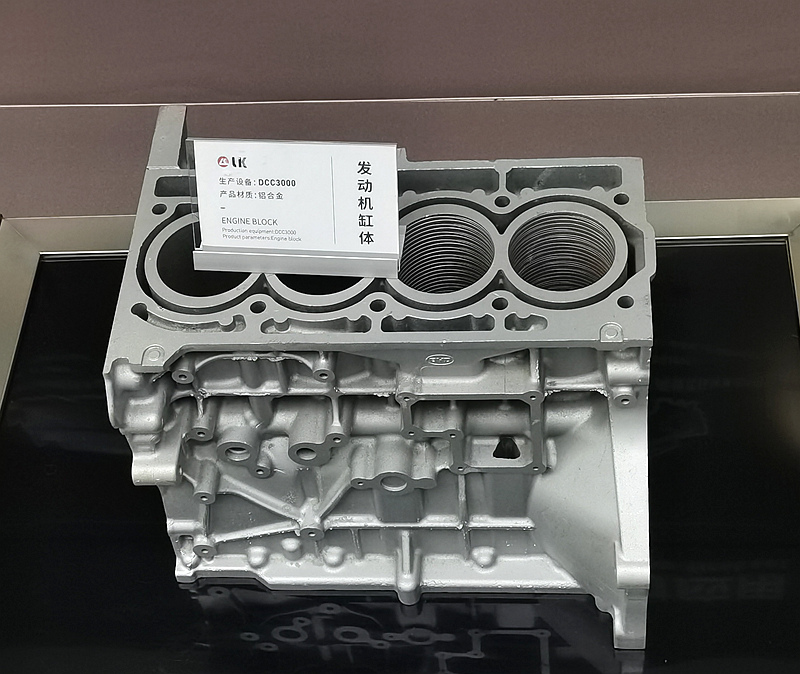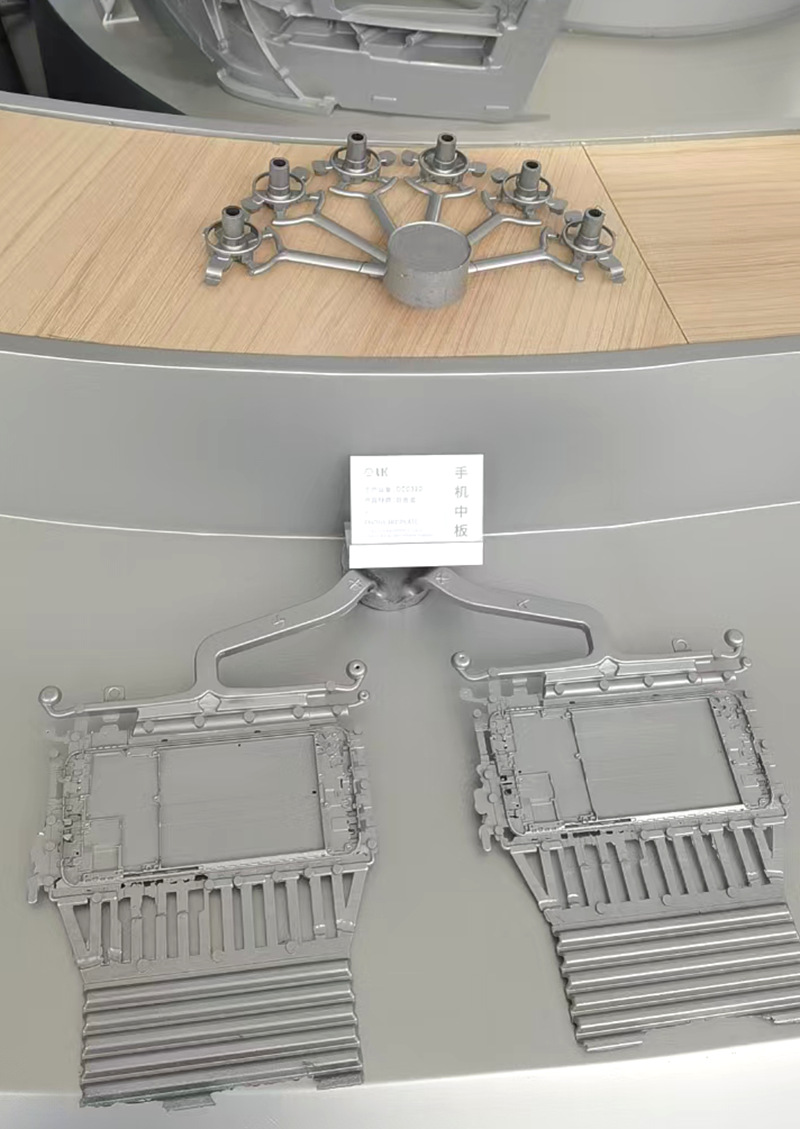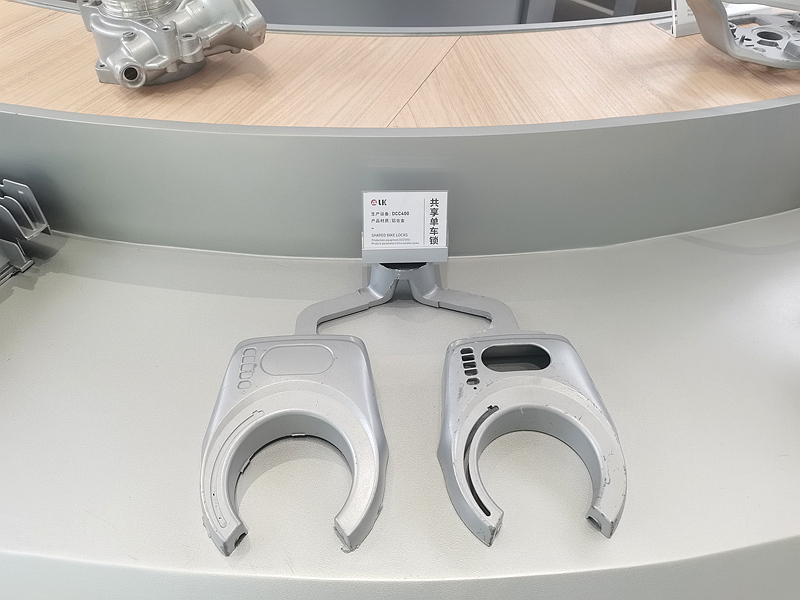Die-casting Mold: One Mold Produces Six Parts!
LK Die Casting Machine / 2024-11-26 11:36:46
A die-casting mold is a crucial part of the die-casting process, used to shape molten metal into specific, pre-designed parts. The die is typically made of two halves that open and close to form a cavity in the shape of the part being produced. Here's an overview of its key features and types:
Components of a Die Casting Mold:
Cavity:
The hollow part of the die is where the molten metal is injected to form the final product.
Core:
The insert is placed inside the cavity to create internal features or hollow sections in the part.
Ejector Pins:
These are used to push the finished part out of the mold after it has cooled and solidified.
Injection System:
This includes the sprue (the main channel where molten metal enters), runners (the paths guiding the metal to different parts of the cavity), and gates (the specific entry points into the cavity).
Cooling Channels:
These channels allow water or other coolants to flow through the mold to reduce the temperature of the molten metal and accelerate the solidification process.
Vents:
Small holes allow air or gas to escape as the molten metal fills the cavity.
Types of Die Casting Molds:
Single Cavity Mold:
Produces one part per cycle. Typically used for low-volume production or when the part is complex.

(Automobile engine cylinder block produced by LK die casting machine)
Multiple Cavity Mold:
Contains more than one cavity, allowing several parts to be produced simultaneously in a single cycle. This is common for high-volume production.
This type of mold is suitable for large-scale batch production, which can save a lot of time, save costs, and improve production efficiency.

(The picture shows a mold that was die-casted in one go using the LK cold chamber die-casting machine DCC320)
Family Mold:
A mold that can produce multiple different parts within the same cycle. The parts are often related in size or function.

(Shared bicycle lock produced by LK cold chamber die-casting machine, DCC 400, one body with two faces.)
Die Materials:
Molds for die casting are generally made from high-strength tool steels (such as H13 steel), which are capable of withstanding the extreme pressure and temperature conditions during the die casting process. Other materials like aluminum or copper alloys can also be used depending on the metal being cast.
Die Casting Process:
Injection: Molten metal is injected under high pressure into the die cavity.
Cooling: The molten metal cools and solidifies quickly within the mold.
Ejection: Once the part has solidified, ejector pins push it out of the mold.
Finishing: After ejection, the part may require secondary processes like trimming, machining, or surface treatment.
Considerations for Die Casting Molds:
Durability: Molds need to be durable to withstand the high temperatures (typically 600–800°C) and pressures (1,000–3,000 bar) during the injection of molten metal.
Design Precision: The accuracy and surface finish of the mold is important for the quality of the final product. Tight tolerances are often required.
Cooling Efficiency: Proper cooling is necessary to reduce cycle times and prevent defects like warping or internal stresses in the cast part.
Applications:
Die-casting molds are commonly used to produce parts for industries such as automotive, aerospace, electronics, appliances, and consumer goods. Parts like engine blocks, transmission housings, brackets, and enclosures for electronics are often made using die-casting molds.
The functions and design of the die-casting machines and their molds must work together to ensure an efficient, precise production process and high-quality parts. The design of the mold directly affects the working efficiency of the die-casting machine. Excellent mold design can increase injection speed, reduce cooling time, and reduce production costs; and the die-casting machine needs to provide enough power to the mold to ensure that these designs can be efficiently realized.
If you want to know more about our die-casting machine, please contact us through our website and our engineers will respond to you within 24 hours.
OTHER CONTENT
-

2024-09-19 14:16:15 LK Cold Chamber Die Casting Machine DCC900 Locking Force: 9000KN Die Height: 400-1000mm Space Between Tie Bars: 930x930mm Shot Weight: 13.5Kg Casting Area Max:2250c㎡
More -

2024-09-19 14:11:06 LK Cold Chamber Die Casting Machine DCC280 Locking Force: 2800KN Die Height: 250-650mm Space Between Tie Bars: 560x560mm Shot Weight: 2.9Kg Casting Area Max:700c㎡
More -

2024-09-19 10:23:07 LK Cold Chamber Die Casting Machine DCC580 Locking Force: 5000KN Die Heigh: 350-850mm Space Between Tie Bars: 760x760mm Shot Weight: 6.9Kg Casting Area Max:1250c㎡
More -

2024-09-19 10:11:20 LK Cold Chamber Die Casting Machine DCC400 Locking Force: 4000KN Die Height: 300-700mm Space Between Tie Bars: 669x669mm Shot Weight: 4.7Kg Casting Area Max:1000c㎡
More

